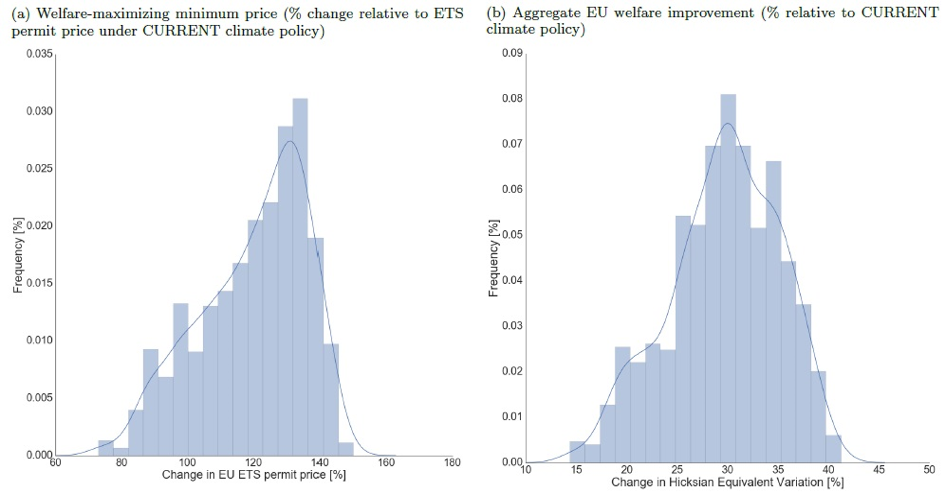Higher Price, Lower Costs? Introducing Minimum Carbon Prices in the EU Emissions Trading Scheme
While emissions trading systems (ETS) have become centerpieces of market-based environmental regulation in many countries, they suffer from two major issues. First, they typically cover only a subset of emissions thereby undermining static cost-effectiveness of pollution control as marginal abatement costs are not equalized across all sources.
Second, exogenous shocks (economic recessions, fuel prices, technology shocks) and overlapping environmental policies (renewable energy policies) tend to reduce the ETS permit price thereby lowering investment incentives for “clean" future technologies and impeding dynamic cost-effectiveness.
The first—and still by far the biggest—international system for trading greenhouse gas emission (GHG) allowances, the EU ETS is also facing these issues: the EU's climate policy is highly partitioned with only about one half of EU's emissions covered by the EU ETS and the price for EU emissions allowances is conceived to be too low.
This project examines whether and by how much the economic costs of achieving a given environmental target with an ETS that only features partial emissions coverage can be reduced by introducing a minimum price for ETS permits. We theoretically characterize the conditions under which a price floor for ETS permits enhances static cost-effectiveness by reducing the differences in marginal abatement costs (MAC) across the partitions of environmental regulation. We show that a higher ETS permit price, induced by a binding minimum price policy, reduces total abatement costs if MAC across countries and sectors in the non-ETS partition are on average higher than the minimum ETS price.
Our theoretical analysis is complemented by an empirical, quantitative assessment of the efficiency and distributional impacts of introducing a minimum price in the EU ETS to achieve the emissions reductions goals of EU Climate Policy. Employing a numerical multi-country multi-sector general equilibrium model of the European carbon market, we find that ETS price floors on the order of 50-70 Euros per ton of CO2 can reduce the welfare costs (i.e., aggregate consumption) of achieving EU climate policy targets by 20-30 percent relative to current policy.
The efficiency argument for a minimum price in the EU ETS is strengthened by our finding that the likely distributional impacts among the EU Member States do not adversely affect regional equity. Introducing a minimum ETS permit price entails welfare gains for the large majority of countries, with the gains of winning countries vastly exceeding the losses of losing countries.
More information about this project is available here.
The ESC member responsible for this project is Prof. Dr. Sebastian Rausch, Professor of Economics / Energy Economics, ETH Zurich
The Chair of Economics/Energy Economics studies the interactions between economic and energy systems to provide a sound foundation of scientific knowledge that will aid decision-makers in confronting the coupled challenges of future energy, climate, technology, and economic well-being.
The group conducts applied economic research of energy and environmental issues with an emphasis on the costs, benefits, evaluation, and design of energy and environmental policies, especially economic incentive measures. Focal themes are climate change, including the design of cost-effective policies to reduce greenhouse gas emissions, and (macro-)economic aspects of the energy transition.

